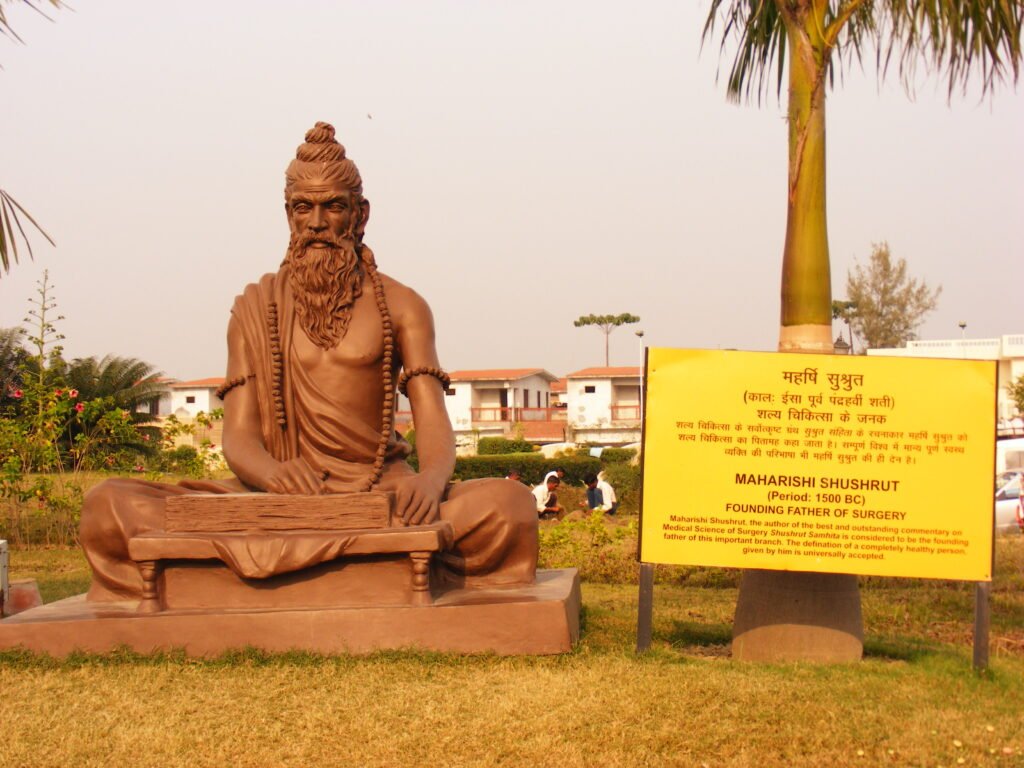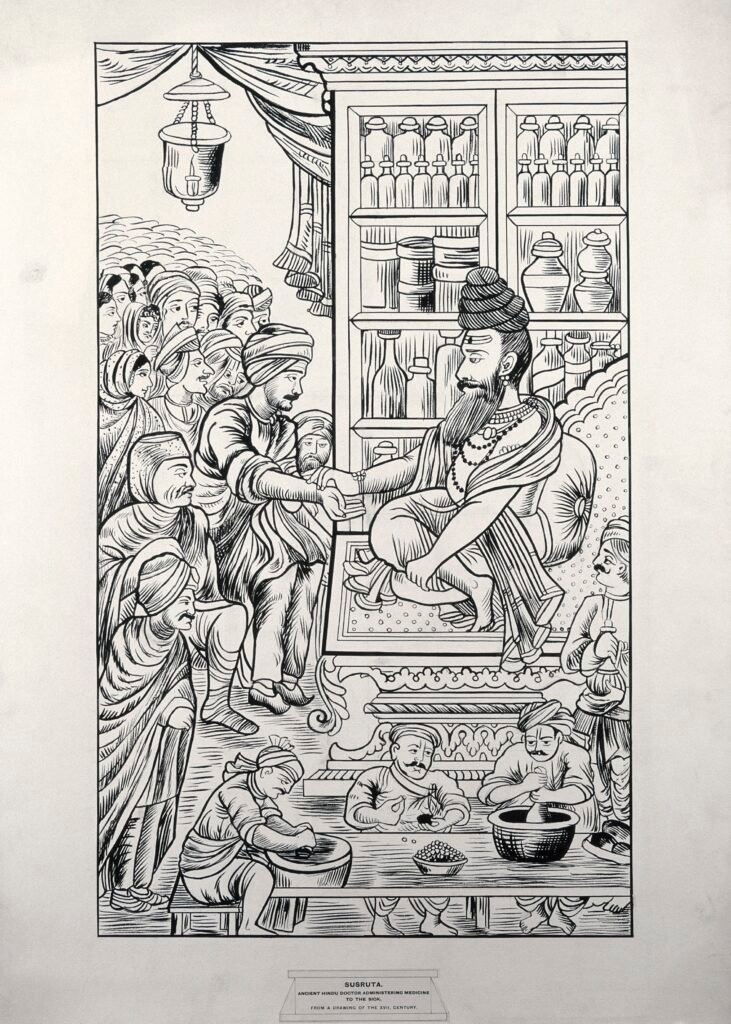The Father of Surgery in India is usually regarded to be Sushruta, an ancient Indian physician who flourished around the 6th century BCE. He is known for performing complex surgical procedures such as cataract surgery, plastic surgery, and rhinoplasty (nose surgery) using techniques that were advanced for his time. He is credited with making significant contributions to the field of surgery, and he is also known for his surgical prowess.
The Sushruta Samhita is an ancient Indian manuscript that details a variety of surgical operations and medicinal treatments. It is also where the work of Sushruta is chronicled for posterity. Throughout the course of time, many people have devoted their time and energy to learning about and translating this literature, since it is widely recognised as being one of the oldest known works on surgery.
Sushruta’s legacy continues on today, and he is generally acknowledged as a pioneer in the area of surgery, not just in India but also in other parts of the globe. This recognition extends beyond the borders of India.

Table of Contents
Life of Sushruta
There is very little information available about Sushruta’s life, and as a result, we do not know the specifics of his educational upbringing. Nonetheless, it is thought that he was born into a family of doctors and obtained his training in surgery and medicine from his father and other members of his family.
According to some accounts, Sushruta studied medicine and surgery at the famous University of Taxila, which was one of the oldest universities in the world and known for its excellence in education. The university was a centre of learning for many different areas of study, including medicine, mathematics, astronomy, and philosophy. It was situated in the region that is now known as Pakistan in the current day.
Sushruta is said to have spent a significant amount of time travelling around India, where he is believed to have studied and practised many forms of medicine and surgery in various places. As a result of the high respect in which his knowledge and abilities in the area of surgery were held, he rose to fame as both a surgeon and a teacher, and a large number of students sought out his instruction.
Contributions of Father of Surgery

Here are some of the major contributions that Sushruta made to the field of surgery:
It is generally agreed that Sushruta was the first surgeon to undertake plastic surgery. He pioneered methods for recreating ears, noses, and other body parts using skin grafts derived from other areas of the body. His procedures were groundbreaking at the time.
In addition to this, Sushruta is famous for his work in cataract surgery. He devised a method for removing cataracts that included shifting the lens to the side and used a specialised device to move the cloudy fluid out of the eye. This allowed him to restore the patient’s vision.
Sushruta also made important contributions to the science of orthopaedics by devising methods for treating dislocated joints, fractures, and other injuries, as well as setting and healing broken bones.
In his medical treatise known as the Sushruta Samhita, Sushruta discussed in great detail a variety of surgical procedures as well as medicinal therapies. This text contains thorough instructions for conducting surgical operations, as well as descriptions of a variety of surgical tools.
In his work, Sushruta also placed a strong focus on maintaining cleanliness and hygiene in surgical procedures. He was an advocate for the sanitation of surgical areas and the use of sterile equipment during surgical procedures.
Sushruta’s work had an enduring influence on the field of surgery, and his contributions to the area are still studied and admired by modern-day medical practitioners. In general, Sushruta’s work had a profound effect on the profession.
Sushruta Samhita
An ancient Indian manuscript known as the Sushruta Samhita is regarded as one of the texts that laid the groundwork for the Ayurveda medicinal practise. Sushruta was an ancient Indian physician and surgeon who lived in the sixth century BCE. He is credited with writing this text.
The Sushruta Samhita is broken up into many distinct parts, some of which include topics such as general medicine, surgery, anatomy, and therapeutics respectively. The portion of the book that deals with surgery is especially well-known, and it is often regarded as one of the oldest known publications to cover surgical methods and procedures.
The author provides a comprehensive account of a number of surgical procedures, including cosmetic surgery, rhinoplasty (also known as nose surgery), and cataract surgery. In addition to that, it offers descriptions of various surgical devices as well as protocols for carrying out various surgical operations.
In addition to its explanations of various surgical procedures, the Sushruta Samhita places a strong emphasis on the need of maintaining high standards of cleanliness and sanitation throughout surgical procedures. In order to reduce the risk of infection and expedite the body’s recovery after surgical procedures, it is recommended that clean surgical tools and surgical sites be sterilised.
The Sushruta Samhita has been studied by practitioners of contemporary medicine for many centuries, and it has been translated into a variety of languages during the course of that time. Its focus on surgical methods and cleanliness has left an indelible mark on the field of surgery and has contributed to the development of current surgical procedures. Its influence will continue to be felt far into the future.
Read Also
Who is the Father of Biology? | Father of Biology – Aristotle ( 384 – 322 BCE )
1 thought on “Who is known as the Father of Surgery? | Father of Surgery – Sushutra ( 6th Century BCE)”